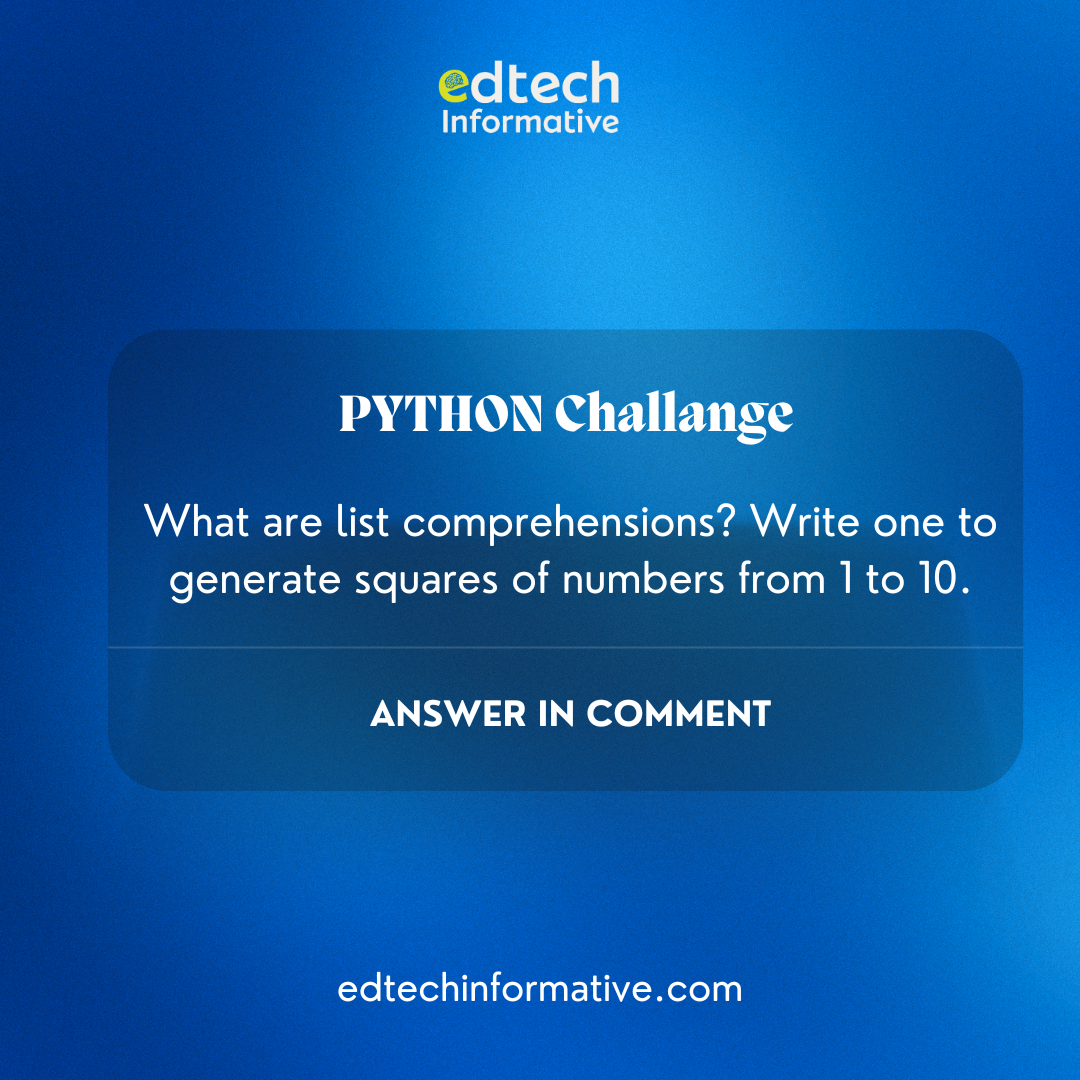Introduction: The Beauty of Python in One Line
If you’ve ever stared at a long for loop in Python and thought, “There has to be a better way,” you’re not alone. Welcome to the world of list comprehensions—Python’s elegant shortcut to building lists with clarity and power. This feature is not just a neat trick, it’s a game-changer for any aspiring data analyst or coder. Whether you’re crunching data or preparing it for machine learning models, list comprehensions will become your go-to tool.
What is a List Comprehension in Python?
List comprehensions are a concise way to create lists in Python. They condense what would typically be multiple lines of code into one readable line—making your programs shorter, faster, and more Pythonic.
Let’s take a traditional approach first:
Now, here’s the same thing using a list comprehension:
Just like that—you’ve gone from 3 lines to 1. Clean, right?
Breaking It Down: The Structure
The structure of a list comprehension follows this pattern:
-
Expression: The operation you’d like to perform (e.g.,
i*i) -
Item: The variable representing each value in the iterable
-
Iterable: A collection like
range(),list,tuple, etc. -
Condition (optional): A filter that decides which items to include
Let’s spice it up with an example using conditions:
This will return [4, 16, 36, 64, 100], which are the squares of even numbers between 1 and 10.
Why Should You Care as a Data Analyst or AI Professional?
Python is the language of Data Analytics and AI. List comprehensions are especially useful in scenarios like:
-
Cleaning messy data
-
Filtering rows or columns in a dataset
-
Creating new features in machine learning models
-
Generating test cases or data samples
Imagine you’re working with large datasets—your ability to write clean and efficient code will save time, improve performance, and impress hiring managers.
Real-World Application: Pandas + List Comprehension Combo
Let’s say you’re using Pandas and you want to create a new column that tags numbers as even or odd:
Boom. That’s Python magic powered by list comprehensions.
Level-Up Tips
-
Use with Nested Loops
-
Flatten Nested Lists
-
Avoid Overcomplication
Keep your list comprehensions readable. If it’s getting too complex, it might be time to switch back to regular loops.
Challenge Time!
Try this:
Write a list comprehension that returns the cubes of numbers divisible by 3 from 1 to 30.
Drop your answers in the comments below or challenge a friend to do it better!
Conclusion: Power in Simplicity
List comprehensions are a great way to think like a Pythonista. They force you to approach problems in a clean, functional way. And the best part? The more you use them, the more fluent you become in Python’s expressive syntax.
At EdTech Informative, we teach more than just code—we teach smart coding. If you’re looking to master Python for data analytics, AI, or automation, this is the kind of knowledge that will take your career from good to great.
🌐 Learn Python with purpose → edtechinformative.com
#PythonTips #ListComprehension #DataAnalytics #PythonChallenge #EdTechInformative #AIReady #PythonForDataScience #LearningNeverStops #CodeSmart #Upskill



